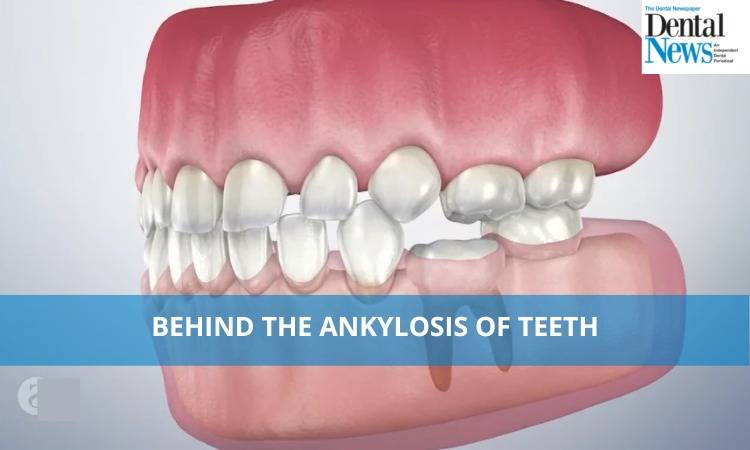
Tooth Ankylosis is an uncommon condition when the root of the tooth is joined with the underlying bone hindering the eruption. The condition can lead to a plethora of dental problems and, if not appropriately managed, can lead to disrupted tooth eruption. Ankylosis of teeth is seen in both primary and permanent dentition, with the former being more prevalent.
Appearance & mechanisms of ankylosis
In ankylosis, the periodontal structure is replaced with the bone. Periodontal ligaments are fibres that anchor between the teeth and the bone. In ankylosis, this anchor is severed, and the root is fused with the bone. While the appearance of an ankylosed tooth is similar to those present in the oral cavity, it is often not at the same occlusal plane. With the presence of submerged teeth, the regular teeth also tend to lose their alignment.
According to research, the initiation of ankylosis follows extensive necrosis of the periodontal ligament and bone formation that invades the denuded root surface area. While trauma can damage the root surface and periodontal ligament, the chances of ankylosis can be minimised if the damage is less. Root surface area of less than 20% involvement has a better prognosis than the damage, which involves more than 20% of the root surface area.
What causes an ankylosed tooth?
Ankylosis can have various reasons depending on the dentition it affects. In primary teeth, ankylosis can be due to dental trauma that leads to luxation and genetic conditions. Meanwhile, causes of ankylosis in permanent dentition include tooth or bone infection, metabolic disorders, untreated gum diseases, trauma and genetics.
Ankylosis often comes as an incidental finding during routine examinations or radiographic findings since the lack of symptoms doesn't incline the patients to visit the doctor.
Treatment options for ankylosis
Treatment options for ankylosis cover a variety of indications. The treatment requires consideration of various factors, including the percentage of root involvement, the type of the dentition involved, mal-alignment of teeth and poor development of teeth and the bone.
Ankylosis in a baby tooth is often resolved once the permanent tooth erupts. However, if a permanent tooth fails to erupt, the deciduous is often extracted to make way for the permanent tooth.
Ankylosis in permanent dentition or adults can be treated via one of the following ways,
● Monitoring of the tooth if it's not hindering the daily functions.
● Orthodontic treatment to reposition for the necessary alignment of the ankylosed tooth.
● Segmental Osteotomy containing the tooth for realignment.
● Luxation of the tooth must be attempted. If not, then a surgical extraction of the permanent tooth is necessary.
● If ankylosis is present in multiple teeth, bone graft and alveolar bone osteotomy may be needed.
Although this condition is rare, it is always a good idea to be aware of it. If you notice one of your child’s teeth is lower than the nearby teeth, or a baby tooth is not loose when it should be, be sure to consult the doctor. Early detection and treatment of ankylosis can prevent complications such as bite problems from misaligned teeth and aesthetic issues. To ensure optimal appearance and function, consult your dentist for the best options for you.

Dr Rida Qamar
The author is contributing writer at Dental News Pakistan and can be reached at Ridaqamar100@gmail.com

